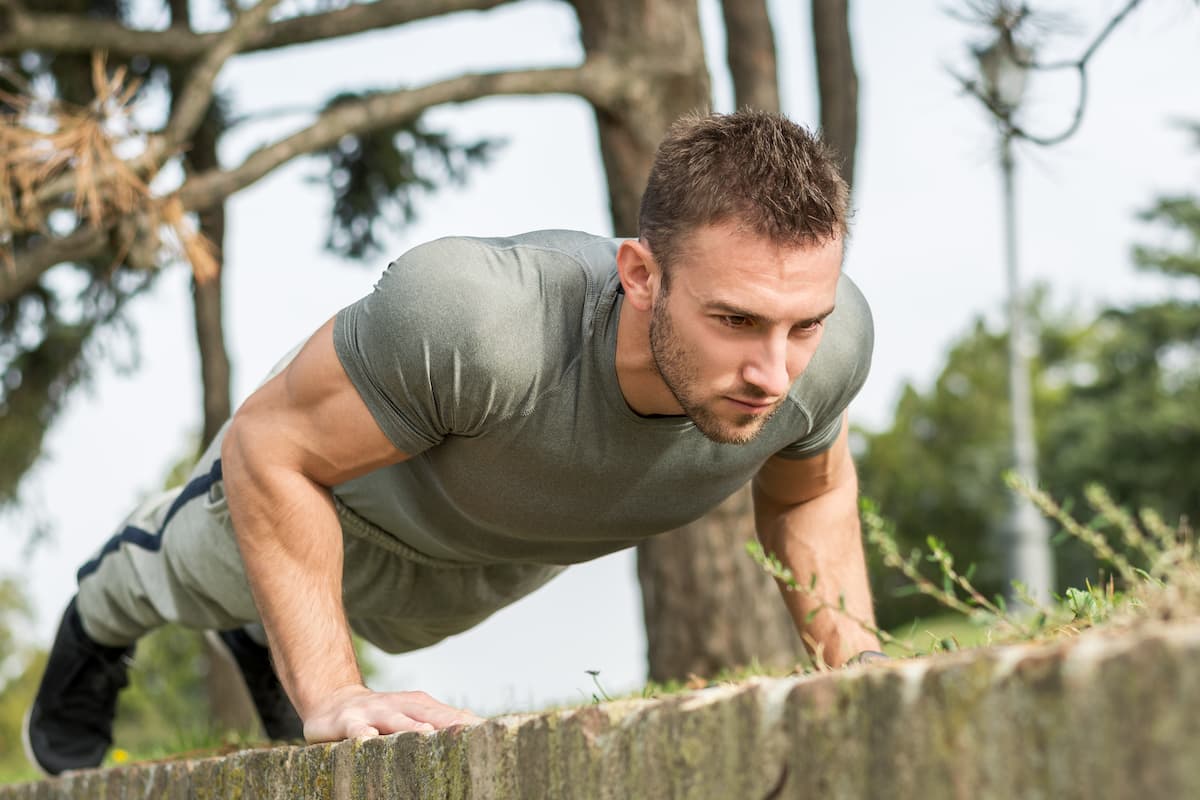Push-ups are a quintessential bodyweight exercise that targets multiple muscle groups, providing an effective workout for arms, chest, and even core muscles.
Often overlooked or underestimated by gym enthusiasts, mastering push-ups is much more complex than it might appear at first glance.
This article delves into the various muscles involved in performing a push-up and offers valuable tips on proper technique to maximize your gains.
Muscle Groups Engaged During Push-ups
A successful push-up relies on the activation and coordination of several major and minor muscle groups throughout the upper body and core. The following muscle groups contribute to the execution of this calisthenics staple:
- Pectoralis Major (Chest)
- Pectoralis Minor (Chest)
- Anterior Deltoids (Shoulders)
- Triceps Brachii (Arms)
- Serratus Anterior (Upper Back Muscle)
- Core Muscles (Abdominals and Lower Back)
- Gluteal Muscles (Buttocks)
- Quadriceps (Legs)
Pectoralis Major and Pectoralis Minor
The pectorals, also referred to as pecs, constitute the bulk of the chest muscles. Comprising the pectoralis major and pectoralis minor, these are the primary target muscles when performing a push-up. As you lower your body towards the ground, your pecs engage to control the descent and assist in propelling you back up into the starting position.
Anterior Deltoids
The anterior deltoids, or front delts, are located at the front of your shoulders. These muscles help stabilize the shoulder joint during your push-up technique and contribute to the lifting phase of the movement.
Triceps Brachii
The triceps brachii muscle covers the back of your upper arm, extending from the scapula (shoulder blade) to the elbow. This powerful muscle group is primarily responsible for extending your arms, playing a significant role in raising your body from the ground throughout each push-up rep.
Serratus Anterior
The serratus anterior muscle can be found on the side of your chest, connecting your ribs to your scapula. As you work through a push-up, this muscle assists with the stabilization of your shoulder blades and contributes to healthy shoulder mechanics.
Core Muscles: Abdominals and Lower Back
Maintaining proper alignment throughout your push-up requires the engagement of your core muscles. The abdominals and lower back muscles work together to keep your spine stable and prevent any unwanted arching or sagging during the exercise.
Gluteal Muscles: Gluteus Maximus and Gluteus Medius
While it may not seem obvious, the gluteal muscles – predominantly the gluteus maximus and gluteus medius – play an essential role in maintaining stability during a push-up. By contracting these muscles, you will provide additional support for your pelvis, spine, and hips.
Quadriceps
Last but not least, the quadriceps on the front of your thighs also contribute to overall balance and form while doing push-ups. Activation of this muscle group further assists in maintaining a straight and rigid body throughout the exercise.
Push-up Technique: Build Strength and Form
To get the most out of your push-ups and target the right muscles, proper form is paramount. The following tips will help you execute a technically correct push-up:
- Position your hands slightly wider than shoulder-width apart, either directly under or just outside your shoulders. Your fingers should point forwards at roughly a 45-degree angle.
- Begin with your legs fully extended, toes resting on the ground. If you require an easier variation, opt for kneeling push-ups instead.
- Engage your core, clenching both your glutes and quads. Keep this tension throughout the entire movement.
- Focusing on lowering your chest to the ground while maintaining proper alignment, remember that the whole body moves as a unit – no sagging hips or raised buttocks! Aim for a depth where your upper arms align with your torso at the bottom of the push-up.
- Press through your palms and return to your starting position, keeping all involved muscles engaged. Ensure a full lockout of your elbows at the top – no cheating!
Incorporating push-ups into your regular exercise routine will dramatically improve your functional strength and mobility across multiple muscle groups. With time and consistent practice, focusing on proper technique will yield immense dividends for your overall fitness levels.

